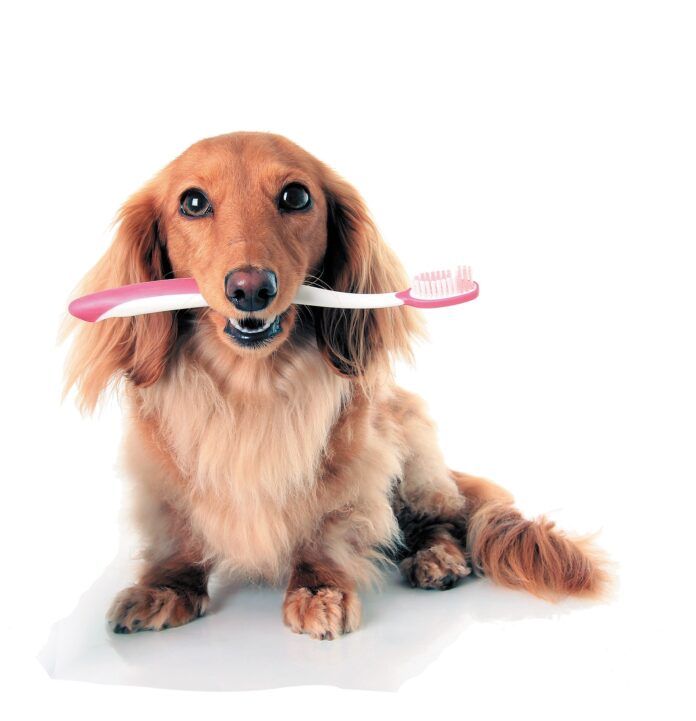When a person gets dental sealants, they are applied directly to the chewing surfaces of the teeth — the molars, specifically — to help prevent cavities and other forms of dental disease. The teeth have little fissures, or grooves, that trap food residue (often sticky in nature) and pave the way for tooth decay. The sealants keep the grooves covered and may stay in place for a person’s lifetime.
Dogs don’t get cavities very often. Their main oral health issue is gum disease. That’s why, in our canine pets, a dental sealant is applied not to the teeth’s pits and fissures but to what is known as the gingival sulcus — the little ridge in the mouth where the teeth meet the gums. A clear material, it is “painted” on by the veterinarian at the gum line with dental brushes when your dog undergoes anesthesia for a cleaning. You can follow up if you’d like by applying an over-the-counter sealant at home on a weekly basis.
Both in-office and at-home sealants are said by some to help deter plaque from accumulating at the gum line, hardening into tartar, and thereby contributing to gum disease, which destabilizes a dog’s teeth and can eventually cause tooth loss. Gum disease, known medically as periodontal disease, also allows bacteria from the plaque to enter the bloodstream and potentially lead to various systemic diseases.
For all that, Board-Certified Veterinary Dentist™ and Your Dog editorial board member Bonnie Shope, VMD, does not use sealants in her practice. It’s not that they’re bad for your pet. It’s that regularly brushing your dog’s teeth at home, often coupled with periodic cleanings by a veterinarian as your dog grows older, remains necessary for maintaining your pet’s oral health whether you use sealants or not.
As the American Hospital Association points out, while sealants for people prevent tooth decay, sealants for dogs only go so far as to decrease accumulation of plaque and do “not totally prevent accumulation of subgingival plaque [plaque below the gum line], the occurrence of periodontal disease, the need for home oral hygiene, or professional dental therapy” in the form of cleanings and other procedures. (The American Veterinary Medical Association does not mention sealants at all.) In other words, you should not be lulled into a false confidence that a once-weekly application of a sealant will do away with the need for everyday canine tooth care.
It should be noted that while sealants for people last years, professionally applied sealants for dogs are advertised by at least one brand to last only six months. Exceedingly few people put their dogs under anesthesia for a tooth cleaning every six months, so the sealant your dog would get at the vet’s office is only a temporary help.
Says Dr. Shope, “While there is nothing wrong with using sealants, the gold standard of oral hygiene remains daily tooth brushing. Any client capable and motivated to apply a sealant weekly can probably brush their pet’s teeth daily.” And that is what she recommends.
Again, if you do want to have a dental sealant applied at the vet’s office while your pet is undergoing a cleaning or apply one at home every week, it will not hurt your dog. But its benefit might be relatively minor compared to the mainstays of canine dental care. Indeed, at-home dental sealants for dogs have not even been listed as a treatment by the Veterinary Oral Health Council (vohc.org), which operates under the auspices of the American Veterinary Dental College®.





